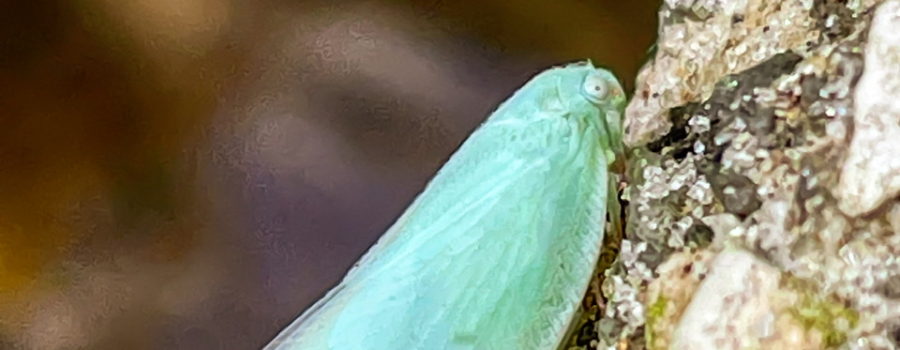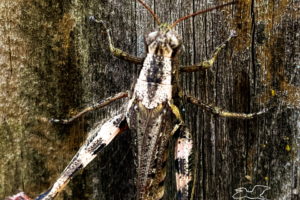Northern Flatid Planthoppers are Common, Interesting Little Insects

Last year in the early summer I took a trip out to Henry Beck Park for a little walk in nature and some photography. It was a spur of the moment trip and I didn’t have a full battery in my camera, but I shot photos until the battery died on me. I added quite a few new plants and animals to my life list, and one of those was the Northern flatid planthopper (Flatormenis proxima), which is a small, moth-like insect from the family Flatidae. They are known for two things. First, they feed on plant sap by inserting their specialized mouth parts into the veins of plants located in the leaves and stems. Second, they produce a waxy substance that they often leave behind in places where they have been feeding. The nymphs produce more wax than the adults. There are several theories as to the function of the wax, but no one knows for sure why it’s produced.
The Flatidae family includes 299 genera that are made up of nearly 1500 species. We have 10 species here in the state of Florida and the Northern flatid planthopper is the most common. It can be found in the Eastern United States from Maine to Florida and as far west as Texas and Iowa. It is also found in the eastern Canadian provinces. Right now, the over wintering eggs are lying dormant in the barks of various shrubs and trees. When the weather begins to warm up, the eggs will hatch, releasing the nymphs. As the nymphs feed and grow, they will produce the waxy substance that they are famous for, and they will also produce honeydew. The honeydew attracts and feeds ants that will protect and care for the nymphs. The nymphs begin to reach maturity in the summer and continue to feed on plant saps, but produce much less wax. In the late summer and early fall the females lay their eggs under the bark of host plants. Hosts plants include many different trees, herbs, shrubs, and vines such as dogwoods, roses, goldenrod, locusts, hollies, azaleas, milkweeds, and maples. The adults usually survive until the weather gets colder.

Fortunately, most of the time planthoppers do not usually cause significant damage to the plants that they live on. Most of the time the main reason that people notice their presence is because of the fluffy, waxy secretions that they leave behind. The honeydew that they secrete can occasionally cause mold to grow on the plants, though, so many gardeners don’t care for them. Usually the best thing to do to get rid of both the insects and the honeydew is to simply rinse your plants off with a garden hose.
The planthopper that I ran into at Henry Beck was actually perched on an outcropping of rock by the creek. The area was surrounded by many types of plants, and I’m sure it was living on one of them. Had it been on the plants, I probably wouldn’t have been able to see it, so for my sake it was lucky that it was out on the rock. The rock did make a good contrasting background for photos, too, which I was quite happy to take advantage of. Even though these little insects are pretty common, we don’t see them all that often due to their size and their greenish coloring which helps them blend into their environment.






Recent Comments